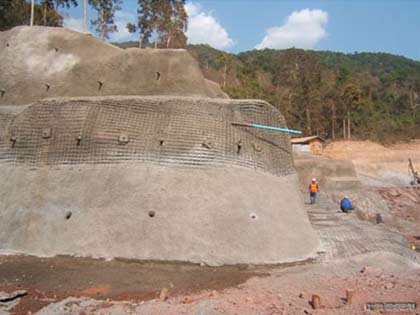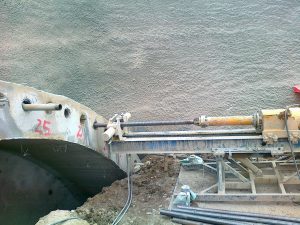Soil Nailing Anchor In India
JB Engineering Soil Nailing Bolts are used in various Hydro Power Projects, Road Projects and Projects of the similar nature to provide strength and durabilty FUSSION BONDED EPOXY COATED & GALVANIZED MATERIALS AVAILABLE as well.
Rock bolts are 15 to 32 diameter bars, inserted in 30 to 60 mm bore holes. They are generally between 3 and 6 meters long. Let’s explore the various types of rock bolts and how they are used to ensure a secure structure.
Soil Nailing bolts usually involves the insertion of reinforcement bars (Hollow/solid) into the exposed slope followed by grouting, placement of a wire mesh and shotcreting before the testing and locking off of the nail through stressing jacks. Hollow soil nail bars can also be self-drilling thus acting as drilling rods with expendable drill bits. Soil nails are cost effective for stable soils where water pressure is not an issue and for excavations where space is a constraint.
They may be bonded along their entire length by cement grouting or anchored at various points at the base of the hole using chemical resin or a mechanical anchorage. Rock bolts transfer load from the unstable exterior, to the confined (and much stronger) interior of the rock mass.

